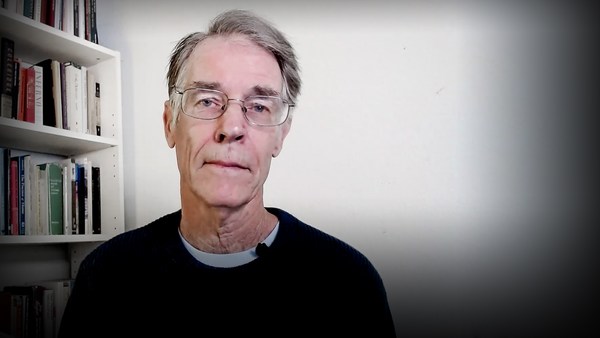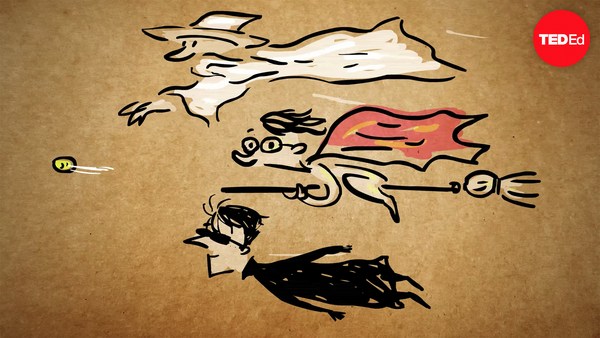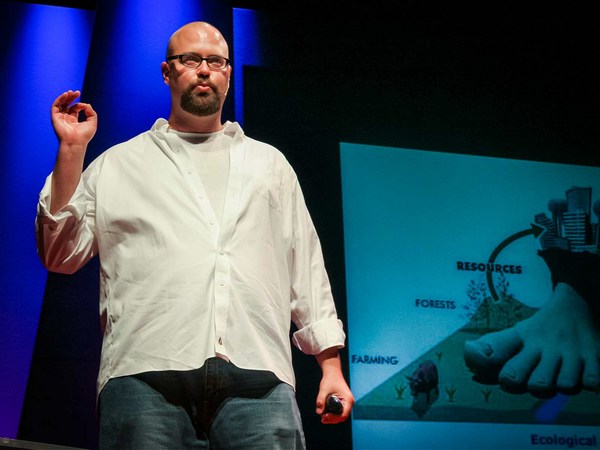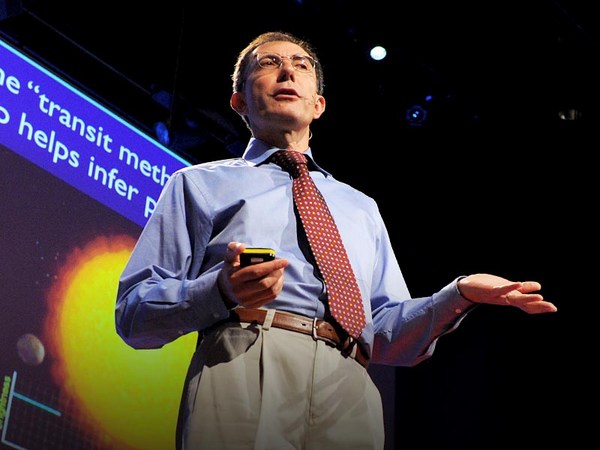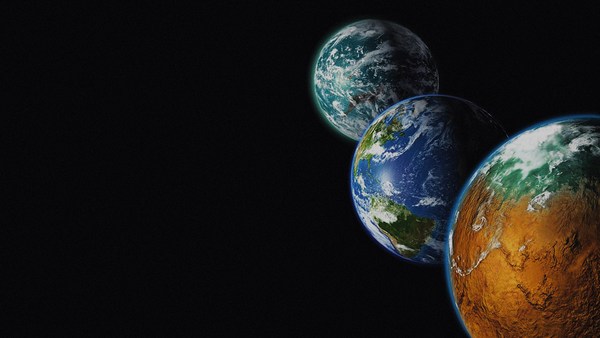More than 10 billion people. Over 7,000 languages spoken. 90 million songs, 42 billion fruit trees, 900 zettabytes of data, 90 million beehives, six million dentists, 142 million square kilometers of protected park and one city.
(Ambient music)
A Planet City. What I've just described is my thought experiment for this world called Planet City, an imaginary city for 10 billion people. The projected global population of the world in 2050.
I design environments for the film and television industry, and I believe that by creating imaginary worlds, we can connect emotionally to the ideas and challenges of our future. So we've been creating Planet City in response to the rising red line on the graph of climate change because world building and storytelling can do so much more than just visualize this data. They can help us to dramatize data. So in speculative cities, we can immerse ourselves in the various consequences of the decisions we face today. They can be both cautionary tales or road maps to an aspirational future. So I invite you all to join me as we journey along the canals of Planet City.
If we listen, we can hear the hum and crackle of flickering blue and red LEDs as they illuminate the lower reaches of the city's farm fields. It smells of soil and hard drives and sweet fruit. A purple sunrise over a new kind of wild.
So five years ago, seminal biologist Edward O. Wilson proposed a new world he called Half-Earth, a plan to stave off mass extinction by devoting half the surface of the earth completely to nature and then consolidating human development to the other half that would remain. And this is where the speculation of Planet City began. And as we started to visualize and design this radical reversal of our planetary sprawl, we soon realized we could actually go much further. In its most provocative form, at the intensity of the densest city that already exists, Planet City could occupy as little as 0.02 percent earth. Could we imagine coming to such a global consensus, radically reversing all of our existing assumptions? What would it take? What would it look like?
(Ambient music)
So our Planet City would allow us to surrender almost the entirety of the globe to nature, to return stolen lands and rewild in our wake. A new national park of the world to be visited and tended, not engineered for extraction. The invisible lines that once divided us would fade beneath this planet of trees. In the streets of Planet City we can prototype some of the necessary lifestyle changes that might be required in order for us to sustain human life. We can explore how such a new world could evolve, not in a singular forced move, but perhaps in a slow, multigenerational retreat from the world we once knew.
To build Planet City, we could remine our old cities rather than virgin ground. No new resources would need to be consumed or extracted to build this city. The world's shipping fleet that currently scatters matter ripped from the earth into our malls and storefronts could be reversed and repurposed to bring all this material back together again into the geological strata of our new city.
The ghosts of nation states would give way to new neighborhoods that could be formed around shared cultural practices as we perform new myths of care, belonging and recreation.
(Ambient music)
If we were to map all the world's celebrations onto a calendar, then we'd realize that running through Planet City would be this continuous festival procession dancing across a 365 day loop, each day amongst the flickering confetti. It would intersect with the new carnival culture, endlessly cycling through new colors, costumes and cacophonies. And to design the systems of Planet City, we travelled to and filmed all of the megascaled renewable energy and agriculture sites that currently exist around the world today: the world's largest solar farm in the Mojave Desert, the illuminated indoor farms protecting crops from harsh Siberian winters, the most productive wind energy network in Gansu, China, the world's largest algae farm in Western Australia. These monumental infrastructures are evidence that much of the technologies required to support the generation of our climate are actually already here. And in Planet City, we just remove the political roadblocks or the lack of cultural investment that's currently holding them back and we visualize them operating at these global scales, but not forgotten out on an industrial periphery, but woven through the very fabric and life of the city itself.
So before dawn breaks in Planet City, thousands of autonomous cleaning blades squeak along the solar fields. Waves of mirrors will ripple to rotate to chase the changing light. A billion panels collected from all over the world. And the batteries of Planet City will be alive with fish and pink algae, as excess wind and solar power will be used to pump water through the canals to high-altitude holding lakes in the city's upper floors. Power will be stored here as potential energy rather than resource-intensive lithium batteries. And tides rise and fall as the lights glow and turbines spin.
So although wildly provocative, imaginary worlds can be grounded in the real science and technology of the present moment, meaning we can project ourselves into these futures. What would it be like to live here, to fish amongst the city battery lakes, to follow the seasons up through the towers, collecting honey with the Planet City beekeepers, to fall in love amongst the pink algae blooms before harvest? So Planet City is not a proposal. However, it's a provocation. It's a thought experiment that shows us we don't need to tread so hard across the Earth because if we can get these systems working at the scale of 10 billion, then the only things stopping us rethinking and consolidating our existing cities is ourselves, our own politics and prejudices, biases and blind spots. So in many ways, all of us have been living in a planetary-scaled city all along. We have urbanized our planet from the scale of the cell to the tectonic plate. Planet City is both entirely fictional, but also already here. Simultaneously, a challenging image of a possible tomorrow and an urgent illumination of the environmental questions that are facing us today.
So at the end of our journey, as we've been wandering through this sci-fi safari through Planet City, we will return to where we first started to look back on our own cities again, but with new eyes. This journey has been a call to actively visualize our possible futures. Imaginary worlds in which we can collectively shape where we all might want to go next.
Thank you.

